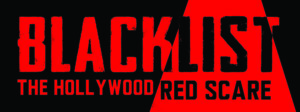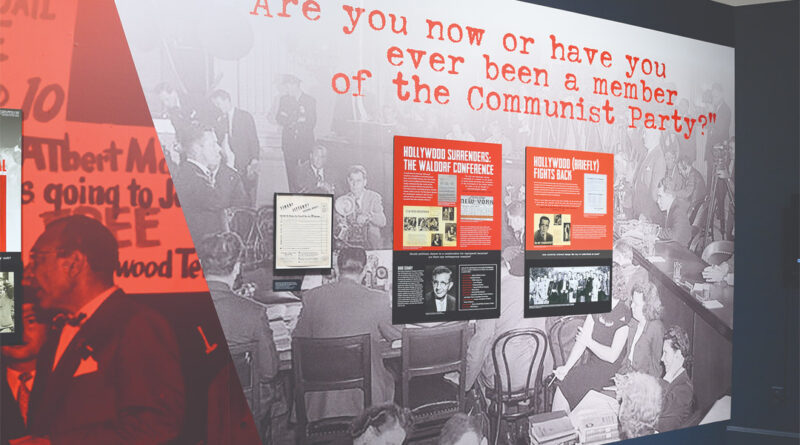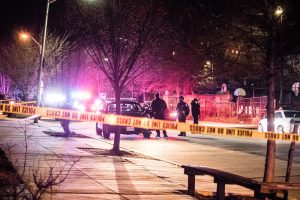A Jewish Museum of Maryland exhibition examines a truly frightening chapter in American history. It was a time in the late 1940s and ‘50s when members of the film industry — many of them Jews — were targeted and investigated by the House Un-American Activities Committee because of alleged communist ties and activities.
Fearing economic ruin, studio heads — many of whom were also Jewish — caved to political pressure and created a list of screenwriters, actors, playwrights and directors who they claimed were “reds.” After their names appeared on the list, these entertainment professionals were blacklisted and unable to find work in Hollywood.
Originally curated by the Jewish Museum Milwaukee and revised by the Jewish Museum of Maryland, “Blacklist: the Hollywood Red Scare” opened in March and runs through Oct. 31. Jmore recently spoke with Sol Davis, the East Baltimore museum’s executive director, about the exhibit and its relevance for contemporary audiences.

Jmore: What appealed to you about this traveling exhibition?
Davis: I was pleased to learn this exhibit was on our calendar when I arrived at the JMM in January 2021. Between the time of our commitment to stage the exhibit several years ago and its actual presentation in 2022, the themes and political realities featured have only grown more pressing, as has the need for platforms that open space for reflection and generative discussion, such as this show.
How would you characterize Jewish involvement in the Red Scare?
Jewish involvement in the Red Scare is complex and multifaceted, so it is a bit difficult to capture its many faces. One quality of Jewish involvement that we intend to highlight while staging this exhibit is how antisemitism is folded into so many political ‘scares’ in the U.S. and elsewhere. For example, the anti-labor and anti-immigrant movements that were antecedents to the Red Scare of the 1950s both disproportionately focused and fixated on Jewish people in reality and the figure of ‘the Jew’ in the social and political imaginary.
Who were some of the well-known figures of Red Scare era?
There were political figures like notorious communist hunters [Wisconsin Sen.] Joseph McCarthy and Richard M. Nixon, who was then a member of the House Un-American Activities Committee. There were Hollywood producers, directors and actors who were friendly witnesses for HUAC like Walt Disney, Elia Kazan and Ronald Reagan, and others who organized against the government’s targeting of the film industry by forming the Committee for the First Amendment, including John Huston, Lauren Bacall, Judy Garland and Humphrey Bogart.
And of course, entertainers and writers who were blacklisted for their politics, activism or for just being accused of being a communist, included Dalton Trumbo, Lillian Hellman, Pete Seeger, Paul Robeson, Uta Hagen, Dashiell Hammett, Zero Mostel and many more.
How is the story told in the exhibit?
‘Blacklist: The Hollywood Red Scare’tells this story through an introductory film titled ‘Prying Eyes: A Prelude to the Hollywood Blacklist,’clips from movies referenced in the exhibit, interactive movie posters that reveal the supposedly subversive content of films like ‘It’s A Wonderful Life,’and artifacts, letters, pamphlets and more from both sides of the communist/anti-communist divide.
Plus, a storybooth where visitors can record their own responses to some of the themes in the exhibit.
How did the JMM alter or localize Milwaukee’s exhibition?
There are strict limitations on how traveling exhibits can be altered. So while we had thoughts about ways we would reframe certain aspects of the presentation, the core exhibit is presented as it was received.

We did make an addition/extension to the exhibit that our team is very excited about — a video storybooth located inside the gallery. This is a space where visitors can share their own responses to some of the themes in the exhibit, plus their connections and associations with this history. Visitors can both record their own stories and listen to the stories of other Marylanders.
How is the exhibition relevant today, particularly considering the war in Ukraine?
World War II, and in particular its aftermath, is central to what is animating Russia’s assault on Ukraine, and these histories are also largely shaping public responses and understandings. However, different nations and historical actors have wildly different understandings of World War II and its aftermath. There is much to say about these connections and disconnections.
In short, while the Red Scare was activated around anti-communist sentiments and fears, Russia has instrumentalized a bunk — or at best overblown — anti-fascist or anti-Nazi narrative to justify their invasion of Ukraine.
One theme I find particularly fascinating — and terrifying — is the questions this exhibit raises about loyalty: What does it mean to be loyal? Who defines loyalty? How is it enforced? And of course, how and why do questions about loyalty always haunt the experiences of Jews living in diaspora?
For information, visit jewishmuseummd.org/events/blacklist-the-hollywood-red-scare/.





